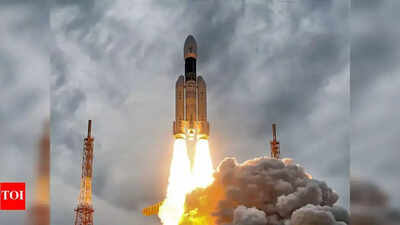The year 2025 marks the beginning of a new chapter in space exploration, with several missions set to enhance our understanding of the Moon, Mars, and other celestial bodies. Spearheaded by space agencies like NASA, ISRO, ESA, and JAXA, along with private sector innovators, these endeavors promise scientific breakthroughs and lay the groundwork for future manned missions and advancements in technology. Here's a look at ten of the most anticipated space missions in the coming years:

Launch Date: 2026
Destination: Moon
Objective: Deliver scientific instruments and rovers to investigate lunar geology and evaluate technologies for future Artemis missions.
Overview: As a crucial part of NASA’s Commercial Lunar Payload Services (CLPS) initiative, the IM-3 mission aims to facilitate a long-term human presence on the Moon. It will deploy sophisticated instruments to analyze the lunar surface, including rovers designed to navigate and examine the terrain. In addition to scientific research, IM-3 will assess novel landing technologies and autonomous systems vital for future crewed Artemis missions. Its success will reinforce confidence in commercial partnerships that support lunar exploration.
Launch Date: December 2025
Destination: Mars Orbit
Objective: Investigate the plasma environment and magnetic fields of Mars to gain insights into atmospheric loss.
Overview: ESCAPADE comprises two compact satellites, named “Blue” and “Gold,” that will orbit Mars at varying altitudes, creating a detailed view of how solar wind erodes the Martian atmosphere. This process is key to understanding the transformation of Mars from a potentially habitable planet to the arid desert observed today. The mission's data will improve models of planetary atmospheres and aid in assessing Mars' past habitability.
Launch Date: 2025
Destination: Earth Orbit
Objective: Monitor Earth's surface changes with precision to study natural disasters and environmental shifts.
Overview: NISAR, a collaborative effort between NASA and ISRO, is equipped with dual-frequency radar capable of penetrating clouds and darkness to produce detailed maps of Earth's surface. It will track land deformation from earthquakes and volcanic activity, monitor deforestation, and measure ice sheet dynamics. This mission will deliver essential data for improved disaster response and a deeper understanding of the impacts of climate change, making it a vital resource for scientists and policymakers worldwide.
Launch Date: April 2026
Destination: Lunar Orbit
Objective: Execute the first crewed mission of the Artemis program to test spacecraft systems in lunar orbit.
Overview: Artemis II signifies NASA’s return to crewed lunar missions after several decades. Four astronauts will orbit the Moon aboard the Orion spacecraft, propelled by the powerful Space Launch System (SLS). This 10-day mission will evaluate life support, navigation, and communication systems in deep space, ensuring readiness for the subsequent Artemis III landing mission. Artemis II is a significant stride towards establishing a sustained human presence on the Moon.
Launch Date: 2025 (Test Flights)
Destination: Low Earth Orbit
Objective: Validate the safety, life support, and avionics systems for India’s first crewed spaceflight.
Overview: Gaganyaan-2 is a critical component of India’s ambitious human spaceflight program. The uncrewed test flights will thoroughly assess the spacecraft’s critical systems, including environmental controls and emergency procedures. These tests are essential to ensure astronaut safety for the planned Gaganyaan-3 mission. Success will position India among the elite nations capable of independently sending humans into space, marking a pivotal moment in its space capabilities.
Launch Date: July 2028
Destination: Titan (Saturn’s Moon)
Objective: Explore Titan’s organic-rich surface and investigate prebiotic chemistry.
Overview: Dragonfly is an innovative rotorcraft lander designed to traverse the diverse terrain of Titan. With its dense atmosphere and abundance of organic molecules, Titan is a prime location to study prebiotic chemistry and the potential for life beyond Earth. Dragonfly will analyze surface composition, weather patterns, and chemical processes, offering unparalleled insights into the formation of life’s building blocks in environments drastically different from Earth.
Launch Date: September 2026
Destination: Phobos (Mars’ Moon)
Objective: Explore Mars’ moons and return samples from Phobos to Earth.
Overview: JAXA’s MMX mission seeks to unravel the mystery of the origins of Mars’ moons by collecting samples from Phobos. The mission will also conduct detailed observations of Deimos. Determining whether these moons are captured asteroids or formed from Mars itself will illuminate the history of the Martian system and the early solar system. The sample return is a complex undertaking that will provide invaluable material for laboratory analysis on Earth.
Launch Date: 2027
Destination: Low Earth Orbit
Objective: Conduct reusable microgravity experiments in orbit.
Overview: ESA’s Space Rider is a reusable, autonomous spaceplane designed to carry payloads for scientific and technological experiments in microgravity. It will facilitate longer-duration studies on biological processes, materials science, and plant growth, helping researchers understand how space conditions affect various systems. Its reusability reduces costs and enhances access to space for European researchers and industry.
Launch Date: April 2025
Destination: Earth Orbit
Objective: Conduct an all-sky infrared survey to study galaxy evolution, cosmic inflation, and dark energy.
Overview: SPHEREx will map the entire sky in infrared light, providing a wealth of data about the universe’s structure and history. It will investigate the origins of galaxies, measure cosmic inflation’s fingerprints, and explore the mysterious dark energy driving the universe’s accelerated expansion. This mission promises to answer fundamental questions about the cosmos with a new level of precision.
Launch Date: 2028
Destination: Venus
Objective: Map Venus’ surface geology to understand its tectonics and volcanic history.
Overview: VERITAS will generate high-resolution maps of Venus’ surface using radar to penetrate its dense clouds. By studying Venus’ tectonic activity and volcanic processes, the mission aims to explain why Venus evolved so differently from Earth despite their similar size and composition. VERITAS will also help assess Venus’ potential for past habitability and provide context for comparative planetology.
These missions represent the forefront of space exploration, integrating human spaceflight, robotic explorers, and Earth observation to expand our knowledge of the solar system and our planet. As they launch and progress over the next decade, they will spark new discoveries and redefine humanity’s place in the cosmos.
Newer articles
Older articles
 Vitamin D Could Slash Tooth Decay Risk by 50%, Study Suggests
Vitamin D Could Slash Tooth Decay Risk by 50%, Study Suggests
 Indian Cricket Star Mukesh Kumar and Wife Divya Singh Announce Birth of Son
Indian Cricket Star Mukesh Kumar and Wife Divya Singh Announce Birth of Son
 Shubman Gill's Captaincy Under Fire: Bold Calls Needed After England Test Defeat
Shubman Gill's Captaincy Under Fire: Bold Calls Needed After England Test Defeat
 Microsoft Aims for Foldable Redemption with Novel Hinge Design to Rival iPhone and Android
Microsoft Aims for Foldable Redemption with Novel Hinge Design to Rival iPhone and Android
 Popular Finance YouTuber's Account Hacked, Bitcoin Scam Promoted: Security Lessons Learned
Popular Finance YouTuber's Account Hacked, Bitcoin Scam Promoted: Security Lessons Learned
 Hollywood's Love Affair with India: Iconic Film Locations Revealed
Hollywood's Love Affair with India: Iconic Film Locations Revealed
 Esha Gupta Breaks Silence on Hardik Pandya Romance Rumors: 'We Were Just Talking'
Esha Gupta Breaks Silence on Hardik Pandya Romance Rumors: 'We Were Just Talking'
 Rishabh Pant Aims to Surpass Virat Kohli in Test Century Tally During England Series
Rishabh Pant Aims to Surpass Virat Kohli in Test Century Tally During England Series
 Prithvi Shaw Credits Sachin Tendulkar's Guidance for Career Revival After Setbacks
Prithvi Shaw Credits Sachin Tendulkar's Guidance for Career Revival After Setbacks
 Ashada Gupt Navratri 2025: Unveiling Dates, Timings, Significance & Secret Rituals
Ashada Gupt Navratri 2025: Unveiling Dates, Timings, Significance & Secret Rituals